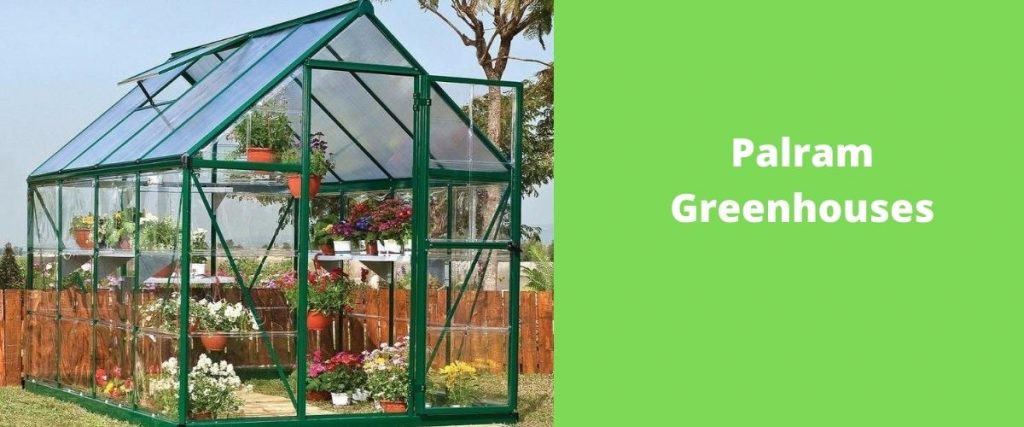The Basic Principle Behind Composting
Microorganisms break down organic materials during the process. Heat, water, and carbon dioxide are produced as organic matter decomposes.


Surprisingly, microbial activity generates a significant amount of heat. It can reach temperatures of 130° to 170° F, which is hot enough to destroy germs and weeds. In winter, this same heat may be used to maintain ideal temperatures within a greenhouse.
The quantity of energy and heat created is determined by the organic matter in the compost, the time it takes to degrade, and other factors.
Step-by-Step Guide to Use Compost to Create Heat
Increasing the soil temperature of a plant by just 10 degrees Fahrenheit can virtually double the plant’s height. As a result, using a greenhouse helps keep the soil warm, which is essential for seedlings.
Heating the greenhouse, on the other hand, can be costly. Chemical breakdown processes in compost may create heat much beyond 100 degrees Fahrenheit, which you can employ in your greenhouse to grow attractive, healthy plants.
Another advantage of generating high-quality organic soil is discovering numerous techniques to trap heat through organic compost for your greenhouse during the winter season.
The majority of people know that a massive pile of fresh manure and other organic agricultural leftovers may create a significant amount of heat. And the heat can continue for weeks or months at a time.
It’s not a new concept to extract heat from compost piles. Decomposing straw may generate heat and carbon dioxide, which can be used to boost the health of your greenhouse plants. New ways for extracting heat from compost have recently been successfully tested.
There are so many methods; you can extract heat using fans. Employing water flow through pipes buried beneath the slab is powerful enough to transport heat from the compost pile to the greenhouse.
Here is a little guide for you to understand how the whole process works in general.
- Inside the greenhouse, put two empty barrels a couple of feet apart. The top should be covered. If the top is open and there is no lid, flip the barrel over.
- Across the two barrels, place a metal wire benchtop. Reposition the barrels to the sides so that they can hold the benchtop on both ends.
- Slide the wood box into the area between the two barrels to make sure it will fit. If it doesn’t work, try a new bin or rearrange the barrels.
- Fill the wooden box with compost. You must compress the compost to create enough heat for the greenhouse.
- Between the barrels, place the wooden box. Plants can be placed on the top of the wire bench. A thermometer should be placed on the benchtop. As the compost decomposes, the temperature should gradually increase.
How to Extract Heat from Compost?
The process of extracting heat from compost is divided into three phases:
1. Heat Production
Microorganisms break the organic waste down in compost. The activity generates carbon dioxide, water, heat, and humus-rich compounds. Microbial activity creates heat at a high pace when the temperature is around 130 to 140 degrees.
This temperature is high enough to destroy weeds and germs. In winter, compost heat can offer optimum temperatures within the greenhouse under perfect conditions.
The quantity of heat created during the composting process is governed by the energy content of the organic waste, the pace of decomposition, the length, and the particular circumstances.
2. Heat Capture
Heat may be extracted from the compost in three ways. These include air- and water-based heat capture, as well as the more modern condenser-type heat exchanger. Blowers in an air-based heat extraction system suck air from active compost piles.
The compost-heated hot vapor is then pushed via the duct system and thermosiphon tubes. In this method, the greenhouse may benefit from both the heat and the carbon dioxide produced by the composting vapors.
A pipe system is installed beneath, around, or directly into an active compost pile in hydronic or water-based heat capture technology. The pipes are also pumped with a water antifreeze solution.
The water will be heated by the solution itself. To buffer the heated temperatures and energy extracted, hot water is delivered to an appropriate heat load device.
The condenser-type heat exchanger is a new method for capturing a large amount of compost thermal energy.
And most commercial facilities utilize this method, which has proven to be the most helpful method among all. In the thermophilic phase, the heat exchanger should use and push heat into the top sections of the pile.
When steam condenses on the heat-exchange surface, the heat is transferred to the heat-carrying medium through conduction via the pipe.
3. Heat Utilization
The flow rate or how you use the energy and the temperature of the discharge water determine the effectiveness of heat extraction.
The output is constantly linked to the heat recovery method as the temperature of the discharging fluids drops the greater flow rates of the water temperature into the extraction system capture more heat.
The flow rate is adjusted to extract more heat from the pile while utilizing the compost heat recovery system to distribute water within the pipe.
Some advanced greenhouses successfully transfer and collect heat by combining water pipes with large-scale manure-based composting.
Home gardeners, on the other hand, utilize low-cost heaters or free variants of this method. Compost bins are used by home gardeners to supply heat to particular areas of the greenhouse.
Others layer the plants on top of the compost to create microclimates to keep the temperature warm throughout the wintertime. This method allows a gardener to reach different temperatures and give warmth based on the needs of the plants.
Takeaway
One of the key issues is whether compost may be utilized as a heat source or not. Can a greenhouse be heated using compost? In reply, you may use compost to heat a greenhouse. The idea for this was conceived in the 1980s. People were heating their greenhouses with decaying straw. Today’s culture emphasizes sustainability in almost everything, and the usage of compost for heating your greenhouse fulfills the requirements.


